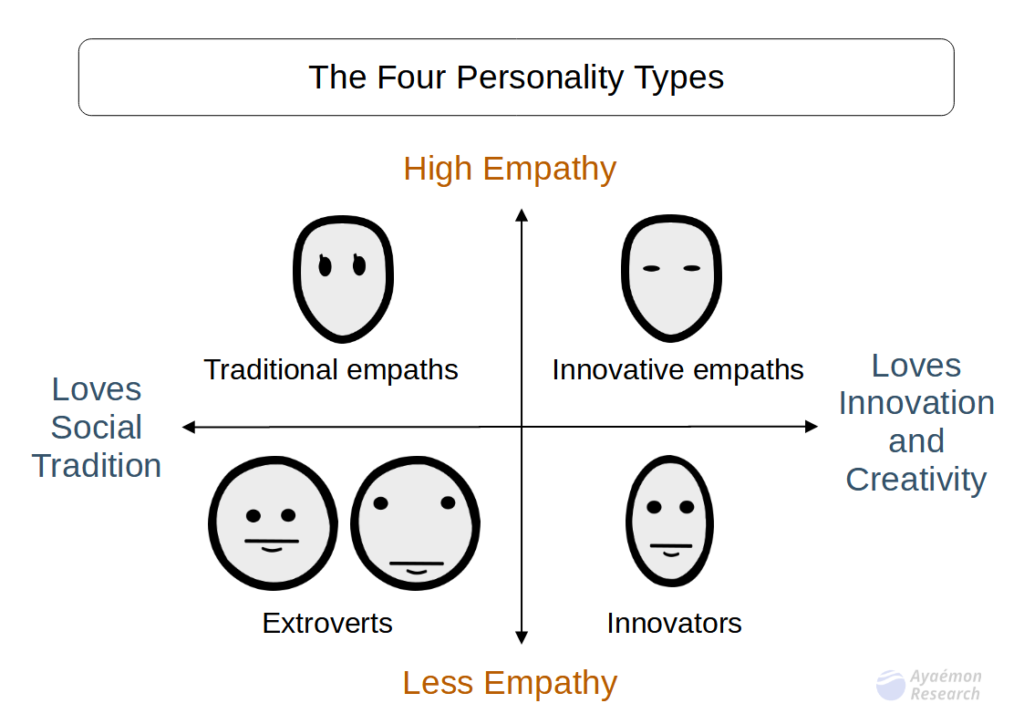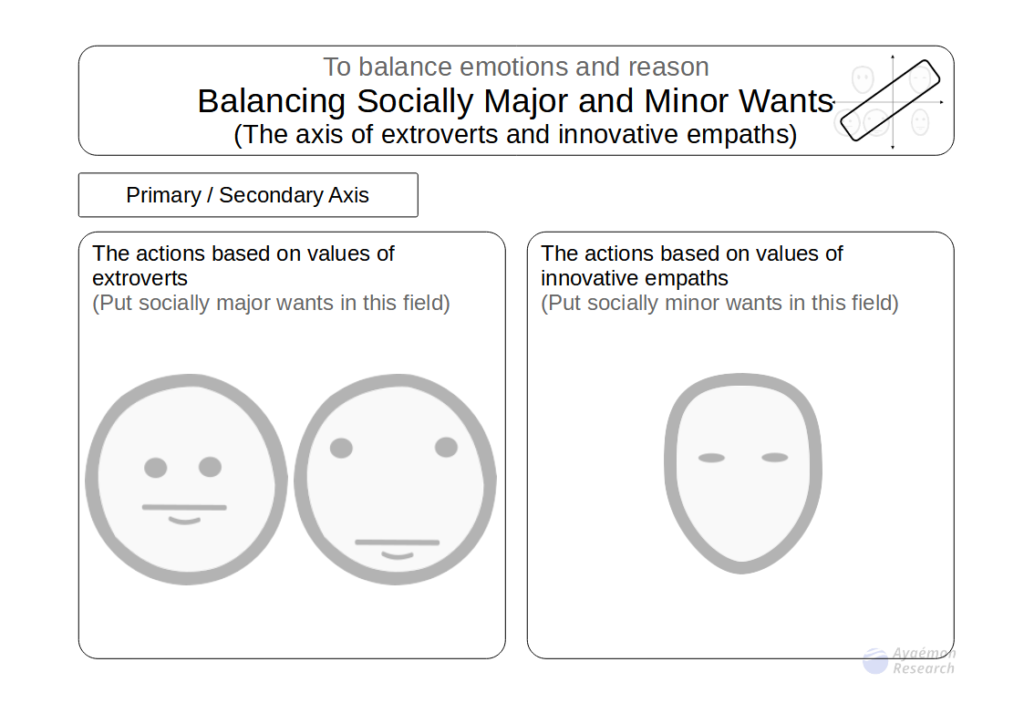Recently, I have been developing a mental framework called the Cross-Judging method. It makes it easy to explain how our mind works. Today, I will introduce a thinking tool to balance our wants based on that method.
How to solve inner conflicts over our options
Sometimes, we have inner conflicts over our options and want to know which is better. A typical example is the conflict between filling our emotions and saving our resources, such as money or time. We want to buy something that looks interesting, but if we do, we consume the money.
That often bothers us which to choose because both values are different kinds: emotional life and safety of life. If we enjoy it by paying money, we can have a better emotional life, but our safety for life will be reduced. On the other hand, if we save money, we can increase the safety of life, but we cannot enjoy our lives. Those different values create our inner conflicts.

In such a case, the thinking tool I will introduce below might help. It is a tool that allows us to balance our minds.
The four types of personalities
To explain it, let me introduce the four types of personalities this time, too, although we might be tired of watching it by now. It is as follows:

There are four types of personalities, as follows:
- Extroverts: People who want socially valuable things as short-term as possible. They want to follow the existing system.
- Traditional empaths: People who want mental abundance and stability in life as long-term as possible. They want to follow the existing system.
- Innovative empaths: People who want mental abundance and stability in life as long-term as possible. They want to create a new system.
- Innovators: People who want socially valuable things as short-term as possible. They want to create a new system.
We have those values inside us as well.
Two axes of the Cross-Judging method
The Cross-Judging method is a mental therapy method to stabilize those values inside us. In that method, we balance the following two axes, which are X-shaped:

- The primary axis: The axis that connects our inherent personality with an inferiority complex. (An inferiority complex is always in the opposite place.)
- The secondary axis: The other axis that connects the rest of the personalities.
For more details, please see the previous article (this article).
The thinking tool to solve the inner conflict
The thinking tool is below. They are two sheets of paper. You can download it and print it in A4.


How to use
I will explain the steps to use them and solve our inner conflicts below.
1) Print the sheets above and prepare a pen and sticky notes.
2) Determine which sheet is the primary axis and which is the secondary axis. Then mark it in the field of “Primary / Secondary Axis.”
3) Pick out one of your wants, write it down on a sticky note, and decide which of the four types it falls into. We sort them out based on the following classifications:
- The axis of traditional empaths and innovators
- The area of traditional empaths: Emotional wants that increase our emotional abundance but consume our resources. They usually don’t have a reason.
- The area of innovators: Wants with reasons to save our resources or increase our material abundance.
- The axis of traditional extroverts and innovative empaths
- The area of extroverts: Wants to be socially major. Socially valuable things that we want to get as short-term as possible.
- The area of innovative empaths: Wants to be socially minor. Internal fulfillment and stability that we want to keep as long-term as possible.

4) If you feel unbalanced in the amount of wants in each sheet, add more wants to the less side.
5) In each area, sort them by which you can start soon. That makes it easier to begin or suspend temporarily.
6) Decide which side to choose based on the following judgments:
- If they are the conflicts of the primary axis, we decide which to choose based on long-term or short-term.
- If they are the conflicts of the secondary axis, we decide which to choose based on boredom and freshness.
If you reach the limit and start to get bored, try doing the other side of what you have been doing. If you feel stagnation, you can intentionally break the balance to create enthusiasm.
7) You will clear your mental conflicts if you balance well.
An example of an innovative empath
Let me explain an example. Assume we are innovative empaths.
If we are troubled by the conflict between filling our emotions and saving our money, as I mentioned at the top of this article, it will be the conflict of the secondary axis. We will find that we have put some sticky notes on the fields of traditional empaths and innovators.
In this case, there is not much difference in which to choose as long as we can balance because they don’t affect the primary axis. We can pick it freely with the trust of our sense of balance. Sometimes, it is okay to focus on one side. That also creates fun.

Perhaps it is the same when we choose the primary axis. In that case, we decide whether they are long-term or short-term. We can select it freely with the trust of our progress in the future. Sometimes, we feel joyful to focus on one side while sacrificing the other. We can enjoy it if we believe in our sense of balance at any time.
Perhaps that makes it easier to make a decision.
Conclusion
Above is the thinking tool to balance our minds based on the Cross-Judging method.
This tool might help us decide which to choose for the future and reduce our inner conflicts.
Thank you for reading this article. I hope to see you in the next one.


